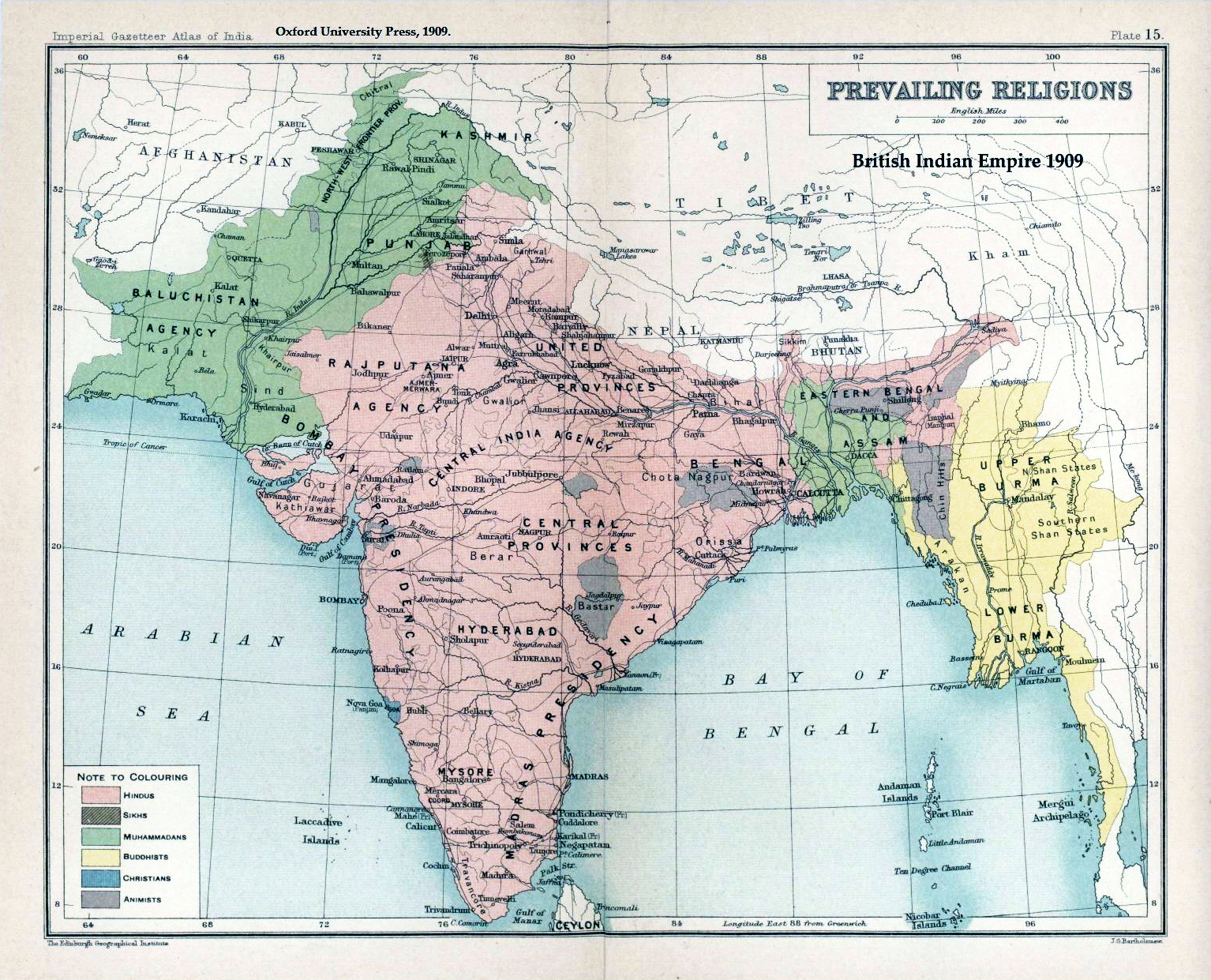Partition and independence in India involved 3 main religions. The majority of Indians practice Hinduism which has been the dominant religion in India since its creation in 2000 BCE. The other two religions in India have much smaller followings, and are made up of Muslims and Sikhs, with the former being the second largest. During the time period of when partition was being considered Muslims had the densest populations located within Western and Eastern India. Through the partition of India in 1947, the Muslims were able to attain their own countries in which they became the new majority leaders. The partition resulted in the creation of West Pakistan (now Pakistan) in Western India and East Pakistan (now Bangladesh) in Eastern India. The last key religion, and the smallest of the 3 is Sikhism. The majority of Sikhs live in the Punjab region located in Northern India. Their capital Lahore, went to Pakistan in the division of the Punjab region during partition. Through the division of the Punjab region the Sikhs migrated back into India and created a new capital city at Chandigarh.
Hinduism has a long deep-rooted tradition in India. As a polytheistic religion Hindus believe in many different gods. There is Brahma “the creator”, Vishnu “the protector”, and Shiva “the destroyer”. Compared to Western ideology Hindus see their lives as many, not as one. This ideology comes from their beliefs in dharma, karma, and reincarnation. Hindus believe in completing one’s dharma which translates to completing one’s duty or required job. Through the completion of one’s dharma, Hindus are able to achieve good karma. Karma is a measurement of the good and bad deeds that you have done throughout your lifetime. The idea is that based on your karma in your previous life, you can rise or fall in social status. Ultimately, Hindus wish to achieve moksha, which is the escape from samsara or the continuous cycle of death and rebirth.
Unlike Hinduism, Islam is a monotheistic religion. Created by the prophet Muhammad in 622 CE Islam has the 2nd largest following out of all the religions in the world. As a Muslim there are “five pillars” to abide by. The first of the five pillars is a confession of faith. By stating that Allah is the one true God you can become a Muslim. The second pillar is daily prayer. As a Muslim, it is required to pray five times a day. When praying, Muslims pray facing the direction of Mecca, which is their holy city. The third pillar of Muslim faith is an alms tax. It is a tax against the more fortunate for the less fortunate. Essentially, it is a way in which Muslims can take care of their poorer adherents. The fourth pillar of Islam is a pilgrimage to Mecca. For Muslims it is important to make the pilgrimage to Mecca (hajj) at least once during your lifetime. Poorer communities will often send only one person as a representative to Mecca during the hajj. The last pillar of Islam is to fast during Ramadan. Ramadan is a religious holiday which commemorates Islam’s holy book the Qur’an. During this month long holiday Muslims do not eat or drink during daylight hours.
In the 16th century Shri Guru Nanak Dev created Sikhism. Like Islam, Sikhism is a monotheistic religion, believing in one God. The creation of Sikhism came about through a mixture of Islam and Hinduism. The idea of having one God was taken from Islam beliefs while, the ideas of karma and reincarnation were taken from Hinduism. Sikhs originally followed Gurus as their enlightened guides and religious figures. There were a total of 10 Gurus and the last Guru, named Gobind Singh, ended the Guru system. Guru Gobind Singh felt as if the Sikh people were following the Gurus and not relying on the sacred texts so, he made their sacred text, the Adi Granth, the supreme authority in Sikhism. Identifying factors of Sikh men are the Five K’s, which are signs of devotion. They are as follows; kesh, kanga, kirpan, kara, and kachera. The kesh represents a Sikhs hair and beard. As an adherent to Sikhism, males do not cut their hair or beards out of respect to God. The next of the Five K’s is the kanga which is a comb for a Sikhs hair. After that, a small ceremonial dagger or sword worn by Sikhs called the kirpan is worn in order to protect the weak. The kara is a bracelet that Sikhs wear, it represents their faith in God and serves as a reminder to commit good deeds. The last of the Five K’s is the kachera, they are traditional Sikh underwear that Sikhs wear. Many Sikhs also wear a turban as part of their identity as for them it represents humility, royalty, respect, and equality.
Video on Hinduisms Origins



